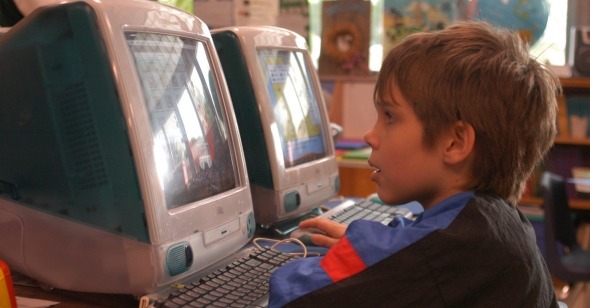In the decade-plus that we’ve engaged in the year-end activity of sorting out the U.S.-released films that best captured our imaginations and intellects over the preceding twelve months, we have seen films land firmly in the top spot that were both thrilling surprises even to us (Flight of the Red Balloon, Alamar, The Deep Blue Sea) and utterly, fabulously expected (Before Sunset, The Tree of Life). This year’s selection, as you have likely already ascertained, belongs in the latter camp. The film in our premier spot falls pretty much in line with all the wide-ranging critics’ polls and awards groups this year—and we couldn’t be more pleased. We’ve been on-the-record Linklater lovers for more than a decade now, and it only seems fitting that the film that is widely considered this great American artist’s magnum opus (though his Before trilogy is arguably that) should sit comfortably at the top.
As usual, we arrived at the final selection by asking for individual ranked top tens from all those who have written for us at least three times during the past year. As for the rest of that list? Well, to try and assign some sort of unifying conceptual framework to disparate films from various countries that just happened to be released over twelve particular successive months is always a fool’s errand. (Perhaps a think piece on how three of the films just happen to begin with the letters “S-T-R-A”?!) We were excited to see Sergei Loznitsa, one of the great living directors, finally crack the top ten with his superb documentary Maidan, after hovering below in 2011 and 2013 with his brilliant fiction films My Joy and In the Fog; likewise first-time showings on the list by Alain Guiraudie, Joachim Pinto, and Ramon Zürcher were as welcome as the reappearances of perennial favorites Tsai Ming-liang, Jean-Luc Godard, James Gray, Wes Anderson, and the Dardennes, who all did some truly bold work this year. Of course there are disappointments: we editors wish there was room for all of our personal cinematic causes—Closed Curtain, The Missing Picture, Mr. Turner, and Only Lovers Left Alive, to name a few. But we needed to limit ourselves; otherwise all is chaos. —MK & JR
[Capsules below written by Julien Allen, Ashley Clark, Leo Goldsmith, Eric Hynes, Michael Koresky, Aliza Ma, Adam Nayman, Jeff Reichert, Andrew Tracy, Elbert Ventura, and Genevieve Yue.]

1. Boyhood
Without wishing to indulge in hyperbole, the real miracle of Richard Linklater’s Boyhood—a moving, intimate family drama shot in small chunks with the same core cast over a period of twelve years—is not simply that its audacious concept was ushered through to completion. (Ellar Coltrane, who plays Mason, the youngster at the center of the film, could have at any moment decided the acting life wasn’t for him, and effectively scuppered the enterprise.) Rather, it’s the unshakable faith that Linklater has invested in stillness, subtlety, and—whisper it—banality, as a pathway to emotional resonance. Think about it: how many other directors would make a film over the same period and resist the temptation to shore up the intimidatingly diffuse timeline with dramatic clichés, coming-of-age touchstones (for instance, young Mason’s hilariously perplexed reaction to a pair of locker-room douchebag bullies), and actorly pyrotechnics? Save for one spectacular, alcohol-fueled family blowout, Boyhood is comprised of hushed, beautifully observed interactions that cut across generational lines, performed with grace and restraint by underrated actors like Patricia Arquette and Ethan Hawke, who both shine as Mason’s separated parents. Moreover, the film is structured with stunningly brusque ellipses—sometimes the only way to spot the significant passage of story time is in the unheralded alteration of a character’s hairstyle, or the sudden appearance of an ill-advised moustache. Linklater’s decision to shoot entirely on 35mm film lends the potentially patchwork project a rich, sun-kissed aesthetic unity, while simultaneously rendering it a gentle elegy for an ailing medium. Boyhood plays like some magical collapsed-time capsule: inherently nostalgic thanks to its production history and in the sense that it represents an extratextual commentary on the evolution of Linklater as a filmmaker. But with its implacable forward momentum and refreshing belief in the importance of living in the present, it is thrillingly now. —AC
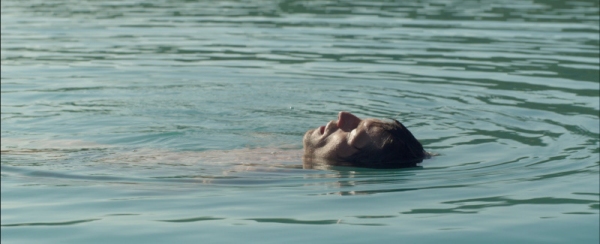
2. Stranger by the Lake
That Alain Guiraudie’s plein soleil thriller—about an urban innocent whose summer idyll at a gay cruising beach gets nasty (in all kinds of ways) when he falls head over heels in love with a hunky, no-maybes-about-it murderer—is a stunning formal accomplishment should be self-evident to anyone who sees it. What’s more surprising is that a film that so insistently links sex and death can offer so much sheer pleasure—a pleasure absent either the masochistic moralizing of the Michael Haneke variety or the glibly nihilistic glee of Gone Girl. That pleasure, moreover, is most definitely plural: Stranger is, simultaneously, an almost anthropological study of the modes and mores of homosexual cruising; a creepily insinuating and gratifyingly gory psychological suspenser; a lyric ode to the corpus masculum, dangling undercarriage and all; and a dazzling transformation of a natural setting into an almost geometrical formal field. Pick the pleasure you prefer, but the genius of Guiraudie’s design is that none of these, from the most (literally) nakedly sensual to the most rarefied and refined, are separable from their fellows—and it’s this very cool, classical integration of elements that makes the film a white-hot vision of carnality as chaos. —AT
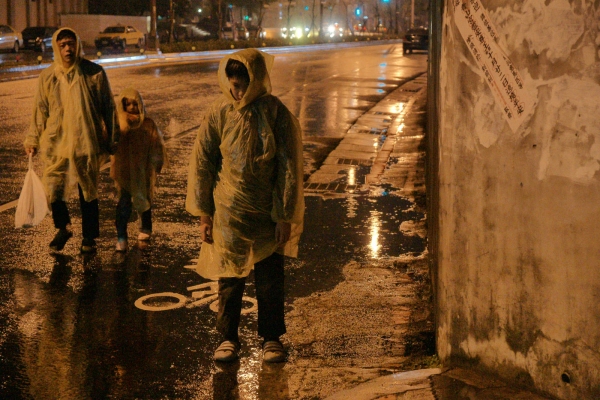
3. Stray Dogs
Film critics should thank God for Andrei Tarkovsky for many reasons, but mostly because of the concept of “sculpting in time.” With a single turn of phrase, the great director ably described his own slow cinema while gifting writers with a handy go-to metaphor that could be applied to any and all duration-based works. Tsai Ming-liang’s Stray Dogs surely illustrates Tarkovsky’s dictum about cinema “expressing the course of time within the frame” via several static shots that last upwards of six or ten minutes, and yet the film’s dragginess seems to belong to its characters: anybody looking for a definition of the theory of relativity should ask a man conscripted to work as a human billboard in torrential Taipei. The disparity between Lee Kang-sheng’s character’s impassionedly nationalist oratory (cribbed from a twelfth-century Chinese poet) and his sub-menial vocation is all the dialectics that Tsai needs to generate his (supposedly) final feature’s subject—it’s the economy, stupid—and pressurize all those ensuing long-take frames until they feel full to bursting with anger and compassion. Tsai’s work has always straddled the line between critical cultural portraiture and pure aestheticism, and with Stray Dogs he’s obliterated the binaries entirely. This film is concrete blocks and midnight rain: a brave and adventurous foray into surrealist neorealism. —AN

4. Goodbye to Language
When cinema’s greatest luminaries dabble in the flimsy fairground trick that is 3D—to show they have its measure—they nearly always hone in on its fundamental drawback (it’s more 2D than 2D) and turn it into a plus. So Hitchcock filmed a stage play with flat sets before a filmed backdrop of the street (Dial M for Murder), Scorsese recreated the concertina 2D confections of Georges Meliès (Hugo), and Spielberg adapted a page-turning comic book (The Adventures of Tintin). Godard, for his part, didn’t need to look that far or try that hard. His cinema has always—figuratively and literally—been about overlapping and layering: images, ideas, sounds, musical cues, capitalized slogans . . . planes of thought. Goodbye to Language is his lyrical, philosophical, and occasionally scatological vision of cinema’s possibilities. Shot with GoPro cameras and smartphones, enfant terrible-style, it is playful and aggressive (he assaults our optic nerves at times), but there is also melancholy in this tale of a couple, played by two couples, who meet, love, argue, and rediscover each other. Even in his intellectualism—which infuriates his detractors most—he shows restraint: the customary machine-gun battery of references, aphorisms, and slogans has been here replaced by an old man throwing such ruminations like skimming stones into Lake Leman, bouncing each idea off the surface, thus giving it more longevity and, eventually, depth. The couple’s dog wanders through the film like a silent Tiresias, seeing the beauty of the world in all its clarity, whilst human eyes witness something more complex and troubled (via images that combine, clash, and blur, as when windscreen wipers on a night drive seem to oscillate across our corneas). JLG said his goodbyes to any concept of a common cinematic language two decades ago, and after a lifetime given over to cinema, he has created a genre that only he now seems to be able to practice. One might favor the less valedictory meaning of the French title, “Ah, Dieu, Oh, Langage” (“Oh God, Oh, Language”), for as he himself fades, Godard continues to give cinema new life. —JA
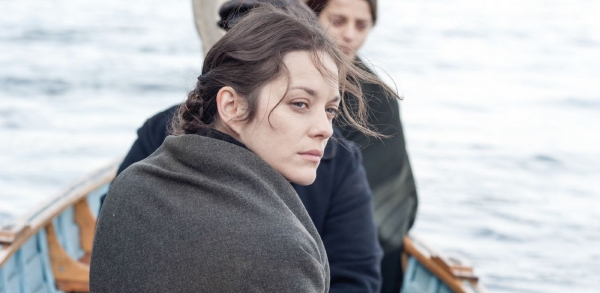
5. The Immigrant
I tried to tally how many times money is either mentioned or shown in The Immigrant, but had to stop after all my fingers, toes, and teeth were accounted for. James Gray’s fifth film may assume an operatic shape and tone—it diagrams a deadly love triangle, brims with soul-bruising pathos, and strikes, via Darius Khondji’s luminescent cinematography, chords of romance, nostalgia, and subjective memory—but it is crucially founded in and constructed of grubby, quotidian exchanges. Of all the 2014 films that purport to expose the dark heart of the American dream (Foxcatcher, Big Eyes, A Most Violent Year, to name just a few), this time machine back to 1920s New York’s toxic melting pot is the year’s most bluntly persuasive and humanely empathetic. Despite the guilt that the devout Ewa (Marion Cotillard) hasn’t any choice but to confront, and the shame that the scheming, shambling Bruno (Joaquin Phoenix) rightfully shoulders, Gray and his late cowriter Richard Menello’s story is not about good vs. evil, sinners vs. saints, but simple survival. Since everything is transactional—shelter, safety, employment, affection, even family—anything extra that arises between people is, like a flower from a crack in the concrete, basically a miracle. To wit, The Immigrant’s mature, at times unsparing dramatic transaction with its audience yields miracles modest (Cotillard’s knee-buckling eye work, Phoenix’s morally complex mumble, and an aria echoing through Ellis Island’s great hall) and, in its final scene, very, very major. Here Gray achieves an emotional, moral, philosophical, spiritual, and dramatic complexity rarely glimpsed in today’s cinema. Bitter blows crumble into an embrace, a cowering limp opens into a chin-up stride, and irreconcilable degradation somehow yields grace. Yes, the final shot is Tarkovsky-level, file-it-away-for-the-highlight-reel masterful, but thanks to Gray’s deliberately gradual, poly-themed build to crescendo, it’s also entirely earned. —EH
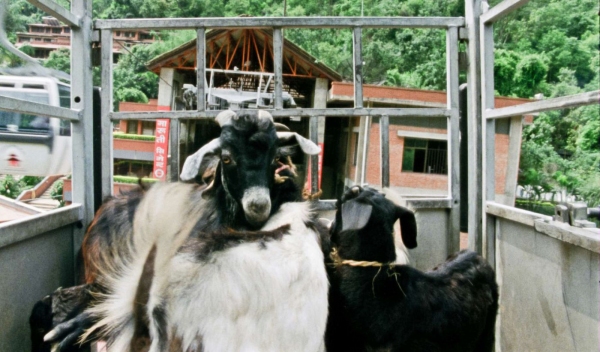
6. Manakamana
In a year filled with films that gave us the gracious space to contemplate, meditate, and luxuriate in time (Boyhood, Stray Dogs, Closed Curtain, Maidan, National Gallery), Stephanie Spray and Pacho Velez’s leisurely ride to and from a sacred Hindu temple at the top of a Nepalese mountain was the most excitingly adaptable. Within its simple structural concept—eleven single takes, each a stationary shot, capturing a seemingly random assortment of individuals, couples, trios, and animals perched before the camera inside a gondola for the roughly eleven-minute glide up or down the mountain—it invites the viewer to consider such a multitude of things that it becomes almost a thought experiment: what do you see? Perhaps you’re overwhelmed by the gorgeous vista itself, however obscured by the people blocking the panorama. Or maybe it’s the landscape of the human face that steals your imagination. Maybe you’re preoccupied with unspoken stories: why these latter-day pilgrims are making the journey at all, whether they are just tourists or locals with religious conviction. And you’re likely, whether you know it or not, considering notions of filmic suspense, most explicitly in the exquisitely funny segment in which a woman and her elderly mother try to finish their rapidly melting ice cream bars before the ride’s over. Or perhaps all of this is secondary to questions about what cinema—yes, even narrative cinema—is; common boundaries between documentary and fiction wither here, but more importantly, so do long-held standards of entertainment. Especially on the big screen, where we get a sense of being held aloft in the sky and where every pylon pass registers like a Richter Scale thump, Spray and Velez’s wondrous film feels like a radically docile cinematic roller coaster. We never see what happens on Manakamana, but it doesn’t matter because what happens in Manakamana is so thrilling. —MK

7. The Grand Budapest Hotel
One of the most quoted lines from The Grand Budapest Hotel doubles as something of an authorial manifesto: “There are still faint glimmers of civilization in this barbaric slaughterhouse that was once known as humanity.” That’s Gustave H., played by Ralph Fiennes, concierge par excellence and sentinel of good taste at the core of Wes Anderson’s nested-doll narrative. The line that follows often gets lopped off: “Indeed, that’s what we provide in our modest, humble, insignificant—oh, fuck it.” That about sums up Anderson’s latest creation: a valiant declaration against encroaching monstrosity, undercut by a flapping “who am I kidding?” white flag. The Grand Budapest Hotel goes into territory we hardly expected. Could the dollhouse choreographer of The Royal Tenenbaums and The Life Aquatic with Steve Zissou really tackle fascism and the Holocaust? But the specter of real-world horrors, frequently out-of-frame or just hinted at here, deepens Anderson’s art. Dismissed by skeptics as all style and no soul, Anderson’s movies are in fact profoundly moving explorations of how people come to be who they are. No less than his other films, The Grand Budapest Hotel elevates as a fundamental value the refusal to let environment and circumstance determine identity. Idiosyncrasy isn’t an indulgence; seemingly precious details are nothing less than bulwarks against the slow creep of twilight. That Gustave H., standing in for his creator, is aware of the futility of the effort makes this Anderson’s most affecting movie yet. —EV
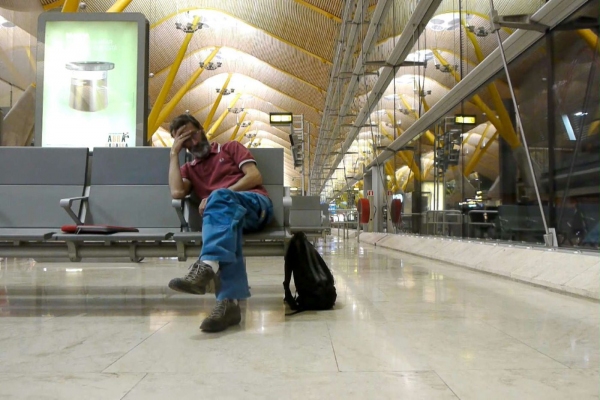
8. What Now? Remind Me
Perhaps it’s his long career as a sound recordist, listening closely and attentively for the minutest of aural variations—under the likes of Manoel de Oliveira, Raúl Ruiz, and João César Monteiro—that makes Joaquim Pinto the director so attuned to that which is most necessary and evocative in his epic autobiographical nonfiction work What Now? Remind Me. Even so, while it takes skill and practice to sit, wearing headphones, keeping your ears open for stray sounds, it’s something else entirely to pay attention closely enough to one’s own life to construct it for a film while living it. This is the majesty of What Now?—that, even in the midst of a year Pinto spent fuzzy and addled by a cocktail of drugs meant to keep his own potentially fatal twinned infections of HIV and Hep C in check, he manages to be aware of his surroundings; empathetic in his dealings with others; fascinated and compelled by literature, art, and music; passionate with his hunky partner, Nuno; and to act as his own cameraman, sound person, director, and editor to document all of the fluctuations of his daily life. The result might be blandly labeled a “personal diary,” but such a signifier, as applied in today’s cinema, makes little room for the boundless curiosity and intellect, not to mention elegant aesthetic control, exhibited across What Now?’s broad length. (The work’s closest cousin is something like the similarly personal, wide-ranging, and non-narcissistic The Beaches of Agnes). It’s a film that’s made of such simple parts, and that unspools so conversationally, that it seems anyone with a camera and a life could make something like it, until it finishes, the weight of the thing hits—hard—and you realize you’ve been in the presence of a uniquely great movie all along. Pretty much every other film in 2014, fiction or non-, came up short. —JR
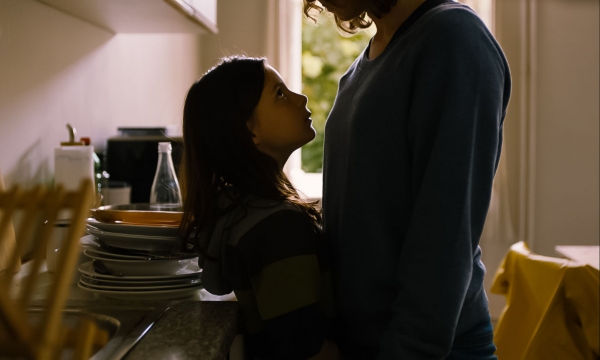
9. The Strange Little Cat (tie)
A perfectly realized artisanal film of astonishing economy, originality, and beauty, The Strange Little Cat is the result of a collaboration by twin brothers Ramon (director) and Silvan (producer) Zürcher, made during an intensive seminar lead by Béla Tarr in their graduating year at the Film and Television Academy in Berlin. Described by the director as a “chamber piece with a minimal plot,” it is a work that makes a cunning monument of the performative gestures and musical qualities of everyday minutiae. Set to striking static shots, almost entirely in a small apartment, the film unfolds over the course of a weekend afternoon as a family—an unnamed mother and father, their older children Karin and Simon, young daughter Clara, and pets—and their visiting neighbors prepare for a dinner party. Zürcher composes his intricate scenes of lived-in space and time with precisely choreographed movements that flow in and out of the apartment’s many rooms, making the tightly delimited domestic space and the still frame of the camera—often obfuscating more than it reveals—the film’s dominant structuring principle. Amidst all the household clutter, surreal flashbacks and pensive monologues furnish the film with rare moments of repose, droll humanism, and startling theatricality. Over a mere 72 minutes, private fears, unconsummated desires, imminent death, chaos, and entropy emerge within the film’s carefully calibrated construction. Although the finished work bears no distinguishing similarities to its original point of inspiration, The Metamorphosis, it recalls Kafka’s statement: “It is not necessary that you leave the house. Remain at your table and listen. Do not even listen, only wait. Do not even wait, be wholly still and alone. The world will present itself to you for its unmasking, it can do no other, in ecstasy it will writhe at your feet.” —AM
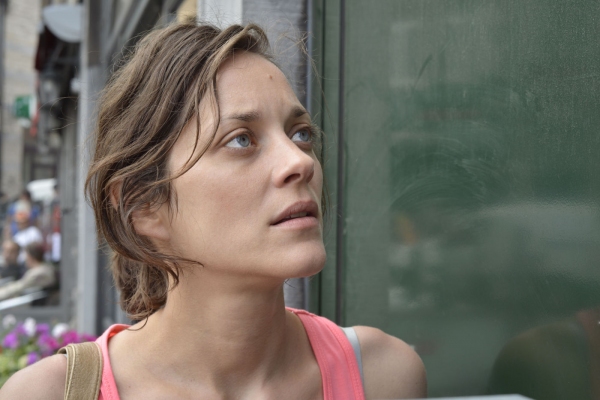
9. Two Days, One Night (tie)
Two Days, One Night begins with Sandra (Marion Cotillard) being roused from a nap by her ringing cell phone. Considering the events that follow, the opening recalls a line from Kenji Mizoguchi’s Sansho the Bailiff, which locates that film in “an era when mankind had not yet awakened as human beings.” Though the Dardennes’ depiction of contemporary working class Belgium is worlds away from Mizoguchi’s feudal Japan, much is the same: their inhabitants contend with hostile environments, endure the cruelty of others, and desperately seek kindness. Sandra has awoken to bad news: having taken extended medical leave from her factory job, she learns that her sixteen coworkers have voted against her return, each opting instead to receive a €1000 bonus. But Juliette (Catherine Salée), the friend on the phone, has negotiated a new vote to be held Monday morning. The deadline structure is set, and Sandra spends her weekend visiting each colleague to appeal for her job. Yet the film’s drama lies less in the outcome than in the repetition of these individual encounters, which the Dardennes show in full. Each begins with Sandra speaking the same words, yet they end differently, with responses ranging from cold reprobation to violence to tearful gratitude. All are tense, unpredictable, and magnificent. At one point, Sandra calls her mission “work,” and it’s probably the hardest work she’s ever done, not only because she runs breathlessly from door to door, or shivers from a panic attack, but also because she must confront the unjust conditions of her employment. The Dardennes’ politics have always been enfolded in ordinary situations, less theoretical abstractions than blunt moral choices wrestled with firsthand, often in one’s actual hands. Here it’s done with Cotillard’s eyes, which go from sleep and drug-induced dullness to clarity, vulnerability, and a hard-won dignity that shines as she meets the eyes of others. —GY
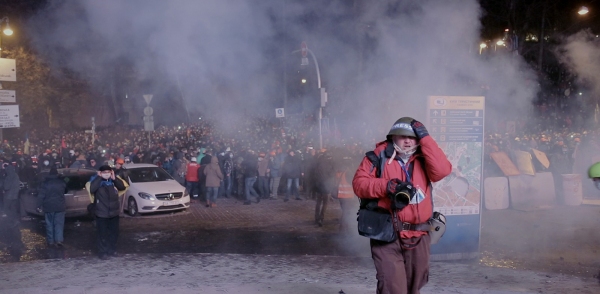
10. Maidan
Documentary filmmakers often construct their works according to the logic of fiction films: how to craft a story, develop a character, establish a setting. Maidan, perhaps betraying director Sergei Loznitsa’s roots as a mathematician, seems more geometric in its composition. Its title means simply “square,” referring to Kiev’s Maidan Nezalezhnosti, or Independence Square, the locus of the protests that led to the 2014 Ukrainian Revolution, but it might just as well hint at the significance of the film’s frame. This simple title seems to pose a set of questions crucial both to politics and to cinema: who occupies this square, and how can it be transformed into a site of public discourse and real political change? With its metronomic editing and precisely angled lines of sight, Maidan is mounted less like an issue doc or work of agitprop, and more like a landscape film. But instead of mountains, valleys, and waterways, the film trains its attention on faces, bodies, crowds, swarms. Here, aesthetics and organizational logic are not simply effective media for a message, but political decisions: when to film; where you point that camera, and at whom; when to cut and, crucially, when not to. All of this is in the service of creating a collective image, an image of the people as a unit, a social body. What does democracy look like? It looks like an image as capacious as any that Bazin found in Wyler, Renoir, and Welles. The difference here is that we are no longer in the realm of mytho-cinematic construction, but immersed in the very immediate, very material mise-en-scène of the present. Here, Loznitsa reminds us thathow and where one points a camera—at a rally, at a soup kitchen, at a cop—is an aesthetic decision with profound consequences. —LG
